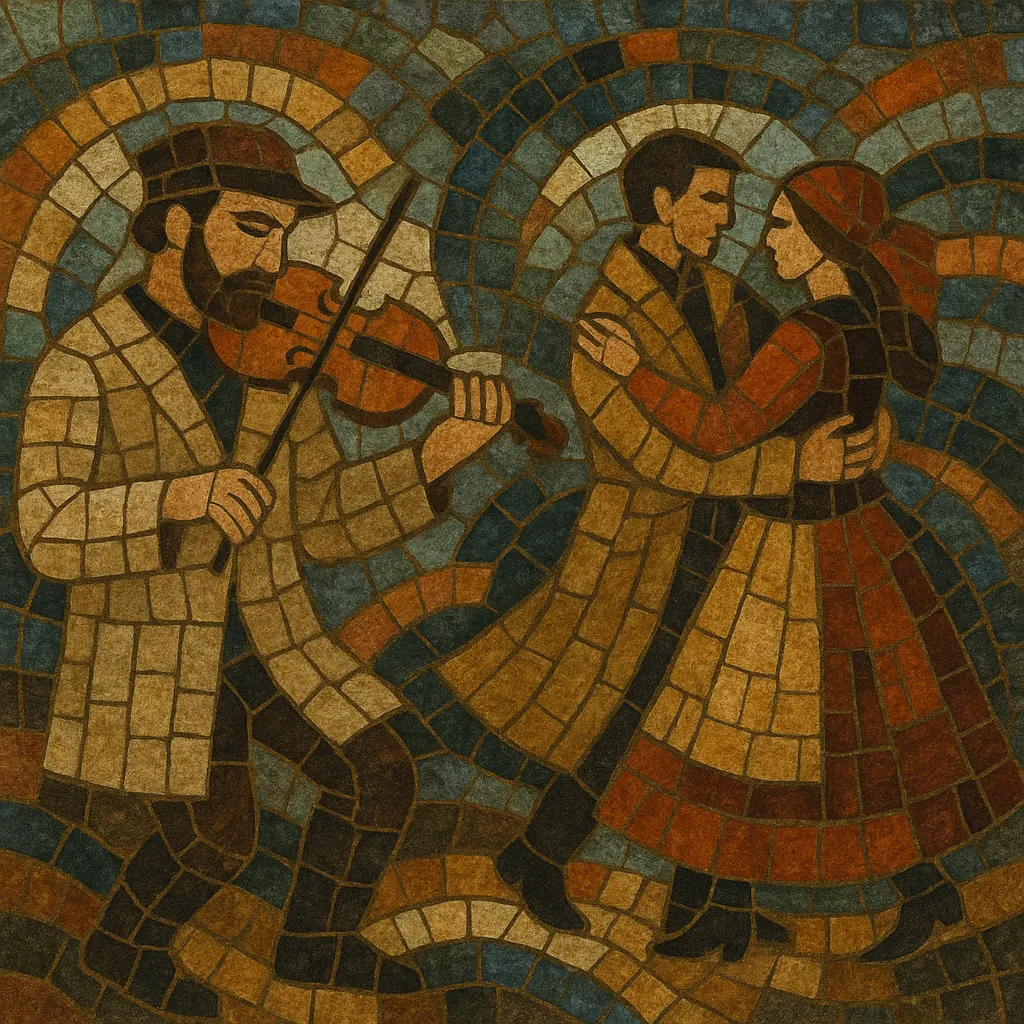Polska is a Nordic couple-dance music in asymmetrical triple time that crystallized in Sweden during the 17th century under strong Polish court influence (the very name means “Polish”). It is danced in turning couple holds and played most often on fiddle or nyckelharpa, with variants in timing and swing across regions such as Dalarna, Uppland, Hälsingland, and Skåne.
Musically, polska is typically in 3/4 or 3/8 but with unequal beat lengths and a distinct lilt that differs from the even pulse of the waltz. Melodies are modal (minor, Dorian, Mixolydian are common), ornamented with trills, turns, and double-stops, and structured in short strains (often AABB) designed to fit dancers’ three steps per bar. Accompaniment ranges from bordun (drone) textures and spare chordal backing to contemporary guitar/cittern/accordion support.
Polska emerged in Sweden in the 1600s when Polish court dances and fashions reached Scandinavia, especially through cultural ties within the Vasa era. Local rural fiddlers absorbed the stylistic features of Polish triple-time dances and transformed them into regionally distinctive turning dances. The result was a Swedish vernacular style—called “polska”—that combined continental court influences with village fiddle traditions.
Across the 18th and 19th centuries, regional variants took shape. Uppland developed a nyckelharpa-rich repertoire; Dalarna styles (e.g., Bingsjö, Rättvik) cultivated characteristic bowings and asymmetrical beat feels; Hälsingland and Skåne formed their own grooves and dance holds. Two broad categories became widely recognized: older "gammalpolska" types and the later, more spinning-oriented "slängpolska." Despite shared triple meter, each region’s polska has its own micro-timing and swing that dancers and musicians learn by feel.
In the late 19th century, newer couple dances (e.g., hambo) emerged, building on polska’s turning vocabulary and musical language. While urbanization and changing tastes reduced the rural dance context, field collectors, local spelmanslag (fiddlers’ associations), and national folk movements preserved polska traditions. The 20th-century folk revival—spurred by influential players like Eric Sahlström—brought the nyckelharpa and regional polska repertoires to new audiences, including festivals and conservatories.
From the late 20th century onward, ensembles such as Väsen, Frifot, Groupa, and Hoven Droven modernized presentation while keeping dance-fit grooves. Today, polska thrives in dance scenes, workshops, and sessions across Sweden and internationally, and it influences a broad Nordic folk and folk-rock ecosystem.
Write in triple time (3/4 or 3/8) but shape the beats unevenly: the first beat is strong, and the second and third can be subtly longer or shorter depending on regional style. Aim for a turning, circular lilt that feels natural for three dance steps per bar.
Use modal centers common in Swedish folk—minor, Dorian, and Mixolydian are frequent. Construct short strains (often 8 bars each) in AABB or AAB forms, with clear cadences that cue dancers. Keep ranges comfortable for fiddle/nyckelharpa and exploit open strings for resonance.
Add trills, mordents, grace notes, and double-stops to articulate the groove. Employ slurs and bow patterns that reinforce the polska lilt, letting the bow “breathe” between pulses. Fiddlers should practice region-specific bowings (e.g., Bingsjö styles) to internalize micro-timing.
Support with bordun (drone fifths), sparsely voiced triads, or modal progressions (I–VII, bVII–I, or Mixolydian moves). Guitar/cittern/bouzouki should follow the dancer’s weight shifts: emphasize beat one, give space on two and three, and avoid over-harmonizing the modal melodies. Accordion or nyckelharpa can supply sympathetic drones.
Core: solo fiddle or nyckelharpa. Duos of two fiddles (thirds/sixths) are traditional. Modern setups add guitar/cittern, accordion, or bass. Keep textures transparent so the groove and melody drive the dance.
Choose a tempo that allows smooth turning (often moderate). Test with dancers if possible; adjust micro-timing so the steps settle naturally into the three pulses of each bar.


